Biden Administration’s Final Parity Rule a Win for Patients & Providers
The Biden administration today released its long-awaited parity final rule, which establishes more stringent protocols, amends existing provisions, and adds new ones to implement the Mental Health Parity and Addiction Equity Act (MHPAEA) that President George W. Bush signed into law 16 years ago next month.
After a preliminary review, the NABH team sees the final rule as a positive move in the right direction in its efforts to ensure that individuals in group health plans or group or individual health insurance coverage have equal coverage for behavioral and physical health services.
“It appears that NABH scored massive victories in persuading the agencies to remove the proposed NQTL exceptions to ‘fraud, waste, and abuse,’ elaborating on ‘meaningful benefits,’ and tying deviations from generally accepted standards of care to NQTL strategies,” said Meiram Bendat, J.D., Ph.D., founder and president of Psych Appeal and counsel to NABH.
NABH staff will continue to review the 536-page rule in the days and weeks ahead. NABH will send members its initial analysis tomorrow, Tuesday, Sept. 10 and also include an update in this week’s edition of CEO Update on Friday, Sept. 13.
The final rule’s major provisions include:
- Makes clear that MHPAEA protects plan participants, beneficiaries, and enrollees from facing greater restrictions on access to MH/SUD benefits as compared to M/S benefits.
- Reinforces that health plans and issuers cannot use non-quantitative treatment limits (NQTL) that are more restrictive than the predominant NQTLs applied to substantially all physical health benefits in the same classification.
- Examples of NQTLs include prior authorization requirements and other medical management techniques, standards related to network composition, and methodologies to determine out-of-network reimbursement rates.
- Requires health plans to address material differences in access to behavioral and physical health benefits that result from application of NQTLs, based on relevant data collected by the plans.
- Requires health plans to conduct comparative analyses to measure the impact of NQTLs, including network composition, out-of-network reimbursement rates, and medical management and prior authorization NQTLs.
- Concerning the design of NQTLs, prohibits discriminatory information, evidence, sources, or standards that systematically disfavor access to behavioral healthcare benefits as compared with physical health benefits.
- Implements the “sunset provision” for self-funded, non-federal governmental plan elections to opt out of complying with MHPAEA; in other words, phase out this option.
To comply with the Consolidated Appropriations Act of 2021, the rule also establishes new health plan requirements and timeframes for reporting their own analyses of their compliance with NQTLs. And the rule specifies how health plans meet their obligations under MHPAEA and related enforcement measures.
Additional guidance and compliance assistance from the federal agencies is pending. For more details, please see the administration’s fact sheet and news release.

